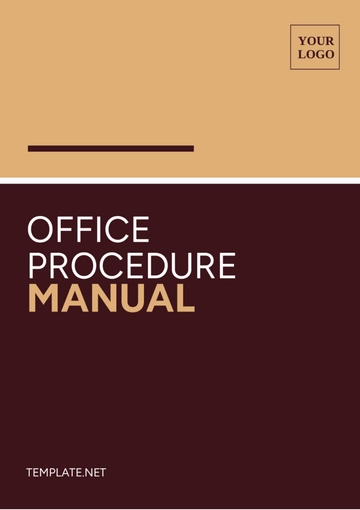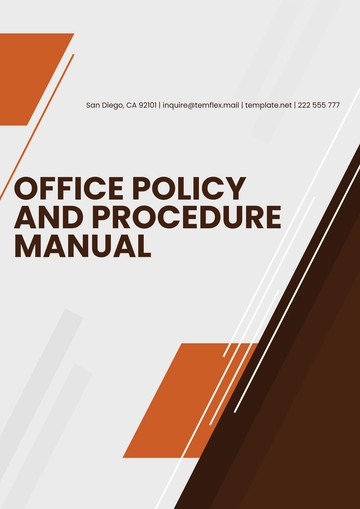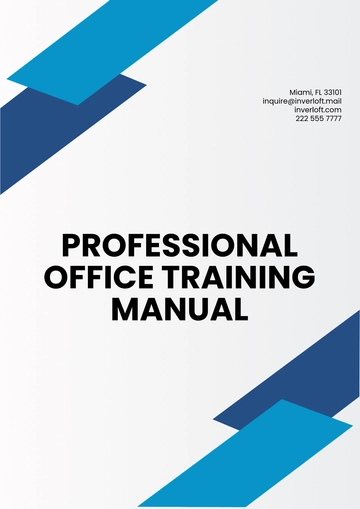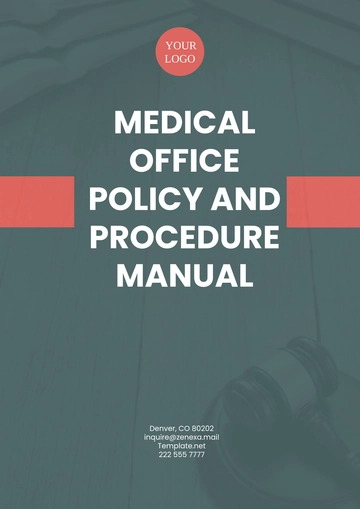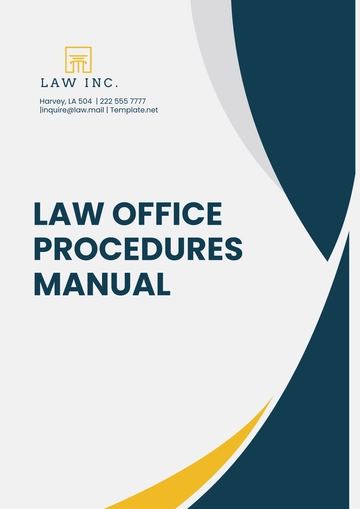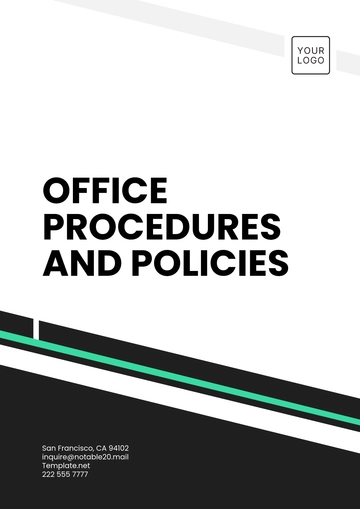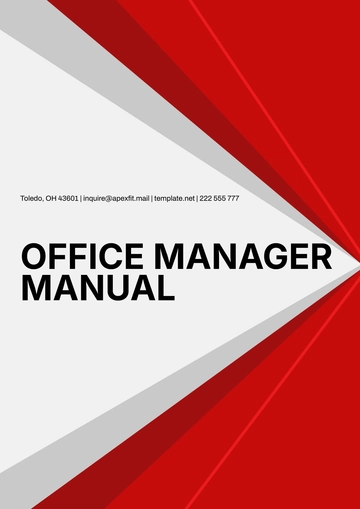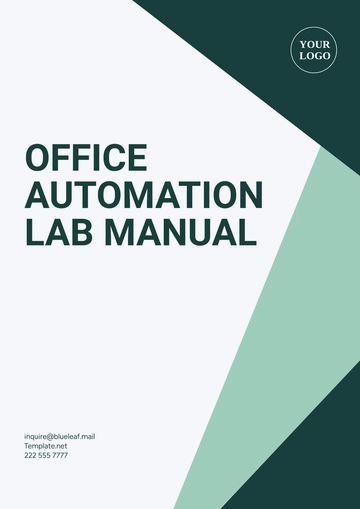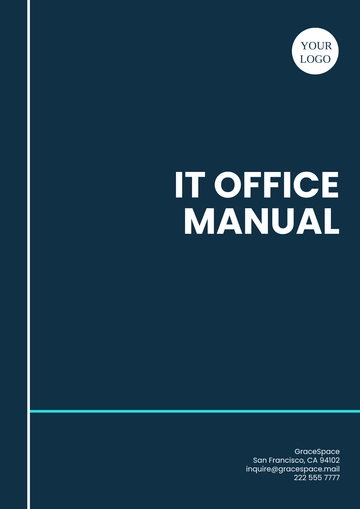Free Email Marketing Manual
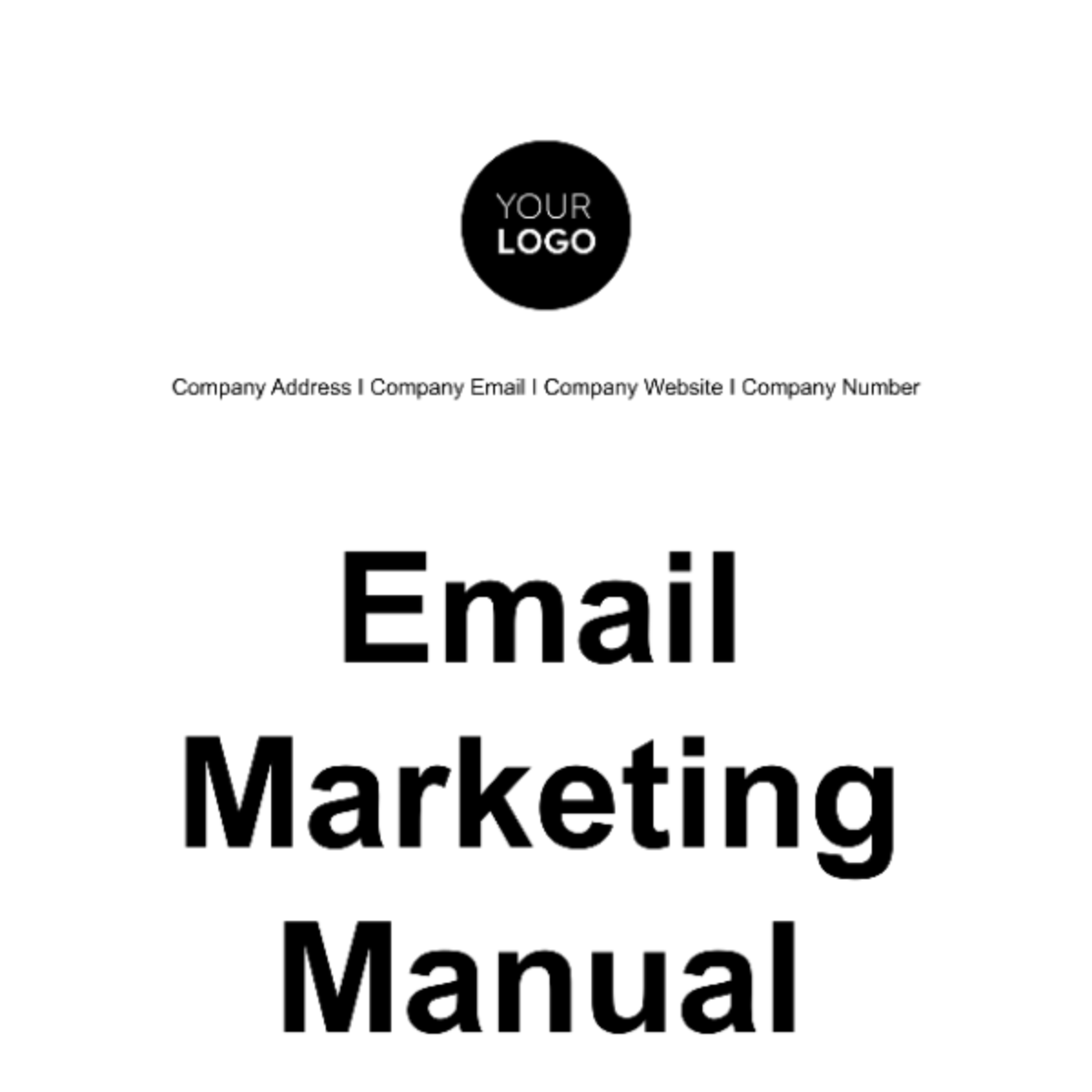
I. Team Structure and Roles
Welcome to the Email Marketing Manual—a comprehensive guide to harnessing the full potential of email as a cornerstone tool in your digital marketing arsenal. In a world where the digital landscape is ever-evolving, email marketing remains an enduring and powerful means of communication. In this introductory section, we will delve into the essence of email marketing, shedding light on its significance, advantages, and the context in which this manual is framed.
A. Define Email Marketing and Its Significance
At its core, email marketing is a strategic communication approach. It involves the precise art of crafting and sending emails to a targeted audience, with the overarching goals of promoting products, and services, fostering customer engagement, and driving conversions. It's the digital equivalent of a personalized letter, tailored to resonate with the recipient.
Email marketing stands as a linchpin in the digital marketing landscape for a multitude of reasons, backed by concrete statistics and industry data. According to recent studies, email marketing consistently boasts an impressive ROI, outperforming other digital marketing channels. In fact, for every dollar spent on email marketing, the average return is estimated to be $42, marking it as one of the most cost-effective strategies in the marketer's toolkit.
B. Advantages of Email Marketing
Cost-Effective: In an era where marketing budgets are scrutinized meticulously, email marketing shines as a cost-effective means of reaching your target audience. Compared to traditional marketing methods like direct mail, television, or print advertising, email campaigns are budget-friendly without compromising reach or impact. |
Personalization: The power of personalization in email marketing cannot be overstated. It extends beyond mere salutations; it involves tailoring email content based on individual preferences, behaviors, and past interactions. Personalized emails have been shown to drive higher engagement and conversion rates. |
High ROI: Email marketing consistently delivers one of the highest returns on investment in the digital marketing sphere. Research findings indicate that this channel's ROI surpasses even that of social media or search engine marketing. The numbers don't lie, making it a compelling choice for marketers seeking results. |
Real-Time Communication: In the digital age, real-time communication is a prized asset. Email marketing provides a direct conduit to your audience, allowing for timely promotions, announcements, and engagement. Whether it's a flash sale, a product launch, or an informative newsletter, email delivers your message promptly. |
C. Context and Purpose of this Manual
Now that we've illuminated the essence and importance of email marketing, it's imperative to set the context and purpose of this manual. This comprehensive guide aims to equip you with the knowledge, strategies, and practical insights necessary to excel in the realm of email marketing. Whether you're a novice eager to embark on this journey or a seasoned marketer looking to refine your skills, you'll find a wealth of valuable information within these pages.
Throughout this manual, we'll explore every facet of email marketing, from crafting compelling content and designing visually appealing emails to analyzing data and staying ahead of evolving trends. By the time you reach the final chapter, you'll be armed with the tools and expertise needed to execute effective email marketing campaigns that resonate with your audience and drive tangible results.
As we embark on this educational journey, we encourage you to approach each chapter with an open mind and a readiness to absorb the insights and strategies we offer. Whether you're seeking to enhance your email marketing prowess for business growth or personal development, this manual is your compass to navigate the intricate terrain of email marketing with finesse and precision.
II. Campaign Planning and Strategy
Building and managing your email list forms the bedrock of successful email marketing campaigns. In this section, we will explore the critical aspects of maintaining a clean and well-segmented email list, providing you with guidelines and best practices to ensure your campaigns reach the right audience with precision and effectiveness.
A. Importance of a Clean and Well-Segmented Email List
Before delving into the strategies for list building and segmentation, it's essential to grasp the profound significance of maintaining a clean and well-segmented email list. Your email list isn't merely a collection of email addresses; it's a dynamic database that can significantly impact the success of your email marketing endeavors.
Reduced Bounce Rates: A clean list ensures that your emails reach their intended destinations without bouncing back. High bounce rates can negatively impact your sender's reputation and deliverability, hindering your ability to reach your audience effectively. |
Relevance and Targeting: Segmentation allows you to tailor your email campaigns with surgical precision. By categorizing your subscribers based on demographics, behavior, purchase history, or engagement level, you can send highly targeted content that resonates with specific segments of your audience. |
B. Guidelines for Building and Growing Your Email List
Now that we understand the importance of a clean and segmented email list, let's delve into the actionable strategies for building and expanding your list:
Opt-In Forms: Implementing opt-in forms on your website, social media channels, and landing pages is the initial step in collecting email addresses. These forms provide a straightforward and transparent way for visitors to express their interest in receiving communication from you. |
Incentives: In the world of email marketing, a little incentive can go a long way. Offer your website visitors and social media followers compelling incentives such as exclusive discounts, valuable resources, or access to premium content in exchange for their email addresses. Incentives motivate sign-ups and provide an immediate reward for subscribers. |
Double Opt-In: Utilize a double opt-in process to verify subscribers' intentions and reduce the likelihood of spam complaints. This process involves sending a confirmation email to the subscriber after their initial sign-up. It ensures that only genuinely interested individuals are added to your list, enhancing list quality. |
C. Best Practices for List Segmentation and Management
Once your list starts to grow, effective segmentation and management become paramount. Here's how to ensure your list remains organized and responsive:
Segmentation Criteria: Develop clear criteria for segmenting your list. Consider factors such as demographics (age, location), behavior (purchase history, website visits), and engagement level (open rates, click-through rates). These criteria will enable you to categorize subscribers effectively for targeted campaigns. |
List Hygiene: Regularly perform list hygiene by identifying and removing inactive or bounced email addresses. Inactive subscribers may harm your deliverability rates, and bounced emails can negatively impact your sender reputation. Keeping your list clean ensures that your messages reach an engaged audience. |
Preference Centers: Empower your subscribers by allowing them to specify their preferences. Implement preference centers that enable subscribers to choose the types of content they want to receive. This customization ensures that subscribers receive emails aligned with their interests and increases engagement. |
By implementing these guidelines and best practices, you'll not only build a robust email list but also ensure that it remains a valuable asset for your email marketing campaigns. A clean and well-segmented list sets the stage for highly targeted and effective communication with your audience, driving better results and fostering stronger relationships with your subscribers.
III. Workflow and Process Management
In the realm of email marketing, the art of crafting effective email campaigns is akin to orchestrating a symphony of elements that harmonize to create a resonant message. In this section, we will guide you through the intricate process of email campaign creation, dissecting its components and unveiling the key elements that drive success.
A. The Process of Creating an Email Marketing Campaign
Goal Setting: Every successful email campaign begins with a clear and measurable objective. Define your campaign's purpose, whether it's driving product sales, nurturing leads, promoting an event, or simply engaging with your audience. Establishing these objectives acts as a guiding star, ensuring your campaign remains on track. |
Audience Segmentation: Your email list is a diverse tapestry of individuals with unique preferences, behaviors, and needs. Effective audience segmentation is the art of dissecting this tapestry and categorizing subscribers into specific groups. This segmentation allows you to send tailored content that speaks directly to the interests and pain points of each segment. |
Content Creation: The heart of your email campaign lies in its content. Craft content that is not only engaging but also directly aligned with your campaign's goals. This content can take various forms, from informative articles and product announcements to captivating stories and personalized recommendations. |
Design and CTAs: Visual appeal and persuasive calls to action (CTAs) are the pillars of effective email design. Create visually captivating emails that are mobile-responsive, ensuring they render seamlessly on various devices. Your CTAs should be clear, persuasive, and strategically placed to drive the desired actions, whether it's making a purchase, signing up for a webinar, or clicking through to a landing page. |
Testing: To optimize the effectiveness of your email campaigns, embrace the practice of A/B testing. Experiment with different elements such as subject lines, visuals, content, and CTAs to understand what resonates best with your audience. A/B testing provides invaluable insights into what drives engagement and conversions. |
Scheduling: Timing can significantly impact the success of your email campaigns. Choose the optimal time and date for sending your emails by considering factors such as your audience's time zone, industry trends, and the nature of your content. Strategic scheduling ensures that your emails land in recipients' inboxes at the right moment for maximum impact. |
B. Key Elements of Effective Emails
Subject Lines: The subject line is your campaign's first impression, a digital handshake that entices recipients to open your email. Craft attention-grabbing subject lines that pique curiosity, convey value, and align with the content inside. Studies show that well-crafted subject lines can significantly increase open rates. |
Content: The content within your email should be a wellspring of value. Deliver information, insights, and offers that resonate with your audience's needs and interests. Keep your message concise and engaging, guiding recipients toward your intended action. |
Design: In today's mobile-centric world, email design must be mobile-responsive and visually appealing. Ensure that your emails render flawlessly on various devices and that the layout and visuals enhance the overall user experience. |
CTAs: Calls to action are the navigational beacons within your email. Use clear and persuasive CTAs that leave no room for ambiguity. Whether it's "Shop Now," "Register Today," or "Learn More," your CTAs should motivate recipients to take the desired action without hesitation. |
C. Tips for A/B Testing and Optimization
A/B Testing: A/B testing is your laboratory for experimentation. Test different elements in your emails, from subject lines and visuals to CTAs and content structure. Analyze the results to uncover insights into what resonates most effectively with your audience. Over time, this iterative approach will lead to refined and optimized campaigns. |
Data-Driven Optimization: The heart of email marketing success lies in data analysis. Continuously monitor and analyze campaign data, tracking metrics like open rates, click-through rates, conversion rates, and unsubscribe rates. Use these insights to refine your strategies, iterate on your campaigns, and continually improve performance. |
By embracing the intricacies of campaign creation, understanding the key elements of effective emails, and adopting a data-driven approach to optimization, you'll be well-equipped to craft email campaigns that resonate with your audience, drive engagement, and achieve your marketing objectives. In the following chapters, we will delve deeper into each of these aspects, providing you with actionable insights and strategies for email marketing success.
IV. Data Analytics and Performance Tracking
In the intricate world of email marketing, two paramount pillars stand as gatekeepers to your campaigns' success: deliverability and compliance. In this section, we'll dive deep into understanding email deliverability, explore best practices for ensuring your emails reach their intended inboxes, and navigate the intricate landscape of email marketing compliance.
A. Understanding Email Deliverability
Email Deliverability Defined: At its core, email deliverability is the litmus test of an email campaign's effectiveness. It encompasses the ability of your emails to successfully navigate the digital terrain and find their rightful place in recipients' inboxes. It's the delicate dance between your email's journey and the recipient's reception. |
Factors Affecting Deliverability: The path to successful email deliverability is laden with multiple factors, each exerting its influence. These include your sender reputation, email content, recipient engagement, and the technical aspects of email transmission. Understanding these elements is fundamental to achieving high deliverability rates. |
B. Best Practices for Ensuring Email Deliverability
Sender Reputation: Your sender reputation is akin to your email marketing currency. A positive reputation is earned through consistent delivery of relevant content and a clean list. Maintain it by adhering to opt-in best practices, avoiding spam traps, and minimizing bounce rates. |
Content Quality: The content of your emails plays a pivotal role in deliverability. Avoid spammy content, excessive use of images, and misleading subject lines. Crafting valuable, relevant, and engaging content not only ensures better deliverability but also enhances the user experience. |
Authentication: Proving the legitimacy of your emails is crucial. Implement authentication protocols like SPF (Sender Policy Framework), DKIM (DomainKeys Identified Mail), and DMARC (Domain-based Message Authentication, Reporting, and Conformance) to authenticate your emails. These measures instill confidence in email service providers and help ensure your emails are not mistaken for spam. |
C. Email Marketing Compliance
CAN-SPAM Act: Navigating the legal landscape of email marketing is essential. Familiarize yourself with the CAN-SPAM Act, which lays out the rules and regulations for commercial email communications. Key requirements include providing an easily accessible unsubscribe link, including sender information, and avoiding deceptive subject lines. |
GDPR (General Data Protection Regulation): If you operate within Europe or have European subscribers, GDPR compliance is paramount. This comprehensive regulation requires obtaining explicit consent from individuals before sending them marketing communications. It also demands respect for data protection rights, such as the right to access and the right to be forgotten. |
Understanding email deliverability, adhering to best practices, and navigating compliance regulations are the cornerstones of a successful and ethical email marketing strategy. By mastering these elements, you not only maximize the impact of your campaigns but also build trust with your audience and maintain the integrity of your sender reputation. In the subsequent chapters, we will delve deeper into these topics, offering practical guidance to ensure your email marketing efforts stand on a solid foundation of deliverability and compliance.
V. Team Training and Development
Welcome to the realm of email marketing analytics and optimization—a pivotal phase in the email marketing journey where data reigns supreme. In this section, we will unravel the importance of tracking and analyzing email metrics, equipping you with the knowledge and tools to harness the power of data for campaign refinement and optimization.
A. Importance of Tracking and Analyzing Email Metrics
The Power of Data: Email marketing isn't a shot in the dark; it's a strategic dance of data and insights. Tracking and analyzing email metrics is not merely a choice; it's an imperative. It's your window into the minds of your audience, offering insights into their preferences, behaviors, and reactions. |
Performance Evaluation: Beyond mere numbers, email metrics serve as your compass for gauging campaign success. They unveil the effectiveness of your strategies, allowing you to adjust your course and fine-tune your approach for better outcomes. |
B. Interpreting Key Metrics
Open Rates: Open rates are the initial handshake in your email engagement journey. This metric measures the percentage of recipients who opened your email. It's a litmus test for your subject line effectiveness. A high open rate signifies that your subject lines resonate with your audience, sparking their curiosity. |
Click-Through Rates: Beyond the handshake, click-through rates are the nods of agreement. They analyze the proportion of users who not only opened your email but also engaged further by clicking on links within it. Click-through rates are a direct reflection of your email's content engagement. |
Conversion Rates: Conversion rates are the ultimate destination—a measure of success. They determine the rate at which recipients take the desired actions, such as making a purchase, signing up for a webinar, or downloading a resource. Conversion rates encapsulate the impact of your email in driving tangible results. |
Bounce Rates: Bounce rates are the hurdles on your email journey. They measure the percentage of emails that couldn't reach their intended destination due to issues like invalid email addresses or a recipient's mailbox being full. A high bounce rate can negatively impact your sender reputation and deliverability. |
Unsubscribe Rates: Unsubscribe rates are the exit signs. They indicate the number of recipients who decided to part ways with your email communications. While some level of unsubscribes is inevitable, monitoring this metric helps you gauge audience satisfaction and tailor your content accordingly. |
Spam Complaints: The red flags in your email journey, spam complaints, reflect the number of recipients who marked your email as spam. High spam complaint rates can tarnish your sender's reputation and deliverability, highlighting the importance of sending relevant and solicited content. |
C. Data-Driven Optimization
Iterative Analysis: Successful email marketing is a continuous cycle of analysis and improvement. Regularly dissect campaign data to identify trends, patterns, and areas for enhancement. Use this iterative analysis to refine your strategies and amplify your campaign's impact. |
A/B Testing: A/B testing isn't a one-time experiment; it's a perpetual quest for optimization. Experiment with different email elements, from subject lines and visuals to CTAs and content structure. Analyze the results to uncover insights into what resonates most effectively with your audience. |
Segmentation Refinement: Your analysis might unveil the need for further segmentation or adjustments to existing segments. Use data-driven insights to refine your audience targeting, ensuring your campaigns are laser-focused on specific needs and preferences. |
By mastering the art of tracking and analyzing email metrics, you gain the power to optimize your campaigns for maximum impact. The insights you derive from these metrics not only drive better results but also foster a deeper understanding of your audience. In the forthcoming chapters, we will delve deeper into specific metrics, analysis techniques, and optimization strategies, empowering you to propel your email marketing endeavors to new heights of effectiveness and efficiency.
- 100% Customizable, free editor
- Access 1 Million+ Templates, photo’s & graphics
- Download or share as a template
- Click and replace photos, graphics, text, backgrounds
- Resize, crop, AI write & more
- Access advanced editor
Enhance your email marketing strategy effortlessly with the Email Marketing Manual Template from Template.net. This resource is not only editable and customizable but also accessible through our user-friendly Ai Editor Tool. Tailor your manual to perfection, optimizing your campaigns for success. Elevate your email marketing game with ease and efficiency.





